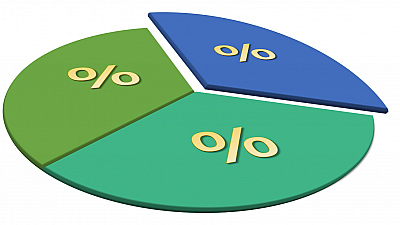The Forex market is decentralized, and investors can’t easily obtain reliable information about the positions of the market participants.
A very practical way to understand the dynamics of the market is to analyze the Commitment of Traders report (COT).
It was first published by the U.S. Commodity Futures Trading Commission (CFTC) in 1962 and covered 13 agricultural contracts. Its purpose was to provide information about the current situation on the futures markets. In the beginning, the data was presented once a month. Since 2000, the information has been published weekly (at 3:30 p.m. Eastern Standard time, every Friday, with data compiled on Tuesday same week) on the Commission’s website.
The COT report is a great way to provide information about the market positions in currency futures and to add some transparency to these complex markets.
It helps traders identify the current trend and determine whether they should take short or long positions in their trades.
It does not categorize individual traders' positions because of legal restraints. According to the Commission, this is confidential business practices.
The COT contains four main types of reports:
LEGACY
The Legacy report shows the market of a commodity split into long, short, and spread positions. The market participants are divided into two main categories, non-commercial and commercial traders. It shows the total open interest, as well as changes in the open interest.
SUPPLEMENTAL
The Supplemental report covers 13 selected agricultural commodity contracts for combined futures and options positions. The report gives information on the open interest positions for the market participants, divided into three categories, non-commercial, commercial and index traders.
DISAGGREGATED
The Disaggregated report is divided into the following categories: agriculture, petroleum and products, natural gas and products, electricity and metals, and other physical contracts. These reports have a futures-only report and a combined futures and options report.
The market participants are split into more detailed categories. The commercial traders are divided into producers, merchants, processors, users and swap dealers. The non-commercials are divided into managed money and other reportables. This is meant to give a clearer and more detailed picture of the way different groups see the market.
TRADERS IN FINANCIAL FUTURES (TFF)
Since 2010 the Commodity Futures Trading Commission has been publishing the Traders in Financial Futures (TFF) report. This report separates large traders on the financial markets into these categories – dealer, intermediary; asset manager, institutional; leveraged funds; other reportables.
The TFF report separates the financial futures market participants into two major “sell side” and “buy side” categories. The first one includes the dealer/intermediary group, while the second is comprised of the other three categories (asset manager/institutional, leveraged funds and other reportables).
COT TERMS
To better understand the Commitment of Traders report here are some useful terms:
⇒ Commercials – all traders who are engaged in the production, processing and sales of a product, and who use futures to manage some risk. These traders are also called hedgers.
⇒ Non-commercials – large financial institutions, traders or funds that use futures for speculative purposes. These traders are also called large speculators.
⇒ Non-reportable positions – traders with positions that are below the minimum required by the limits of the Commodity Futures Trading Commission for position reporting.
⇒ Reportable Positions – all positions at or above the reporting level of the Commodity Futures Trading Commission in any single futures month or option expiration.
⇒ Open interest – the total number of the option or futures contracts that are currently not closed by offset operation, delivery or exercise.
⇒ Short report - shows open interest separately for reportable and non-reportable positions.
⇒ Long Report - in addition to the information from the short report, it contains data on the concentration of the positions of the largest traders.
⇒ The COT report is a very useful tool in the financial markets’ jungle and traders can extract a wealth of information from it. Knowing how to interpret the COT data properly can certainly help position size traders to forecast new trends, which is the ultimate benefit of the report.
The Forex is a global market of endless opportunities, where traders of all shapes and sizes are welcome. The digitalization of the market has enhanced the trading experience and has made it as accessible and convenient as it can be. You don’t need to go to New York, or London, or anywhere else to reach this market. All you need is in your hands.




